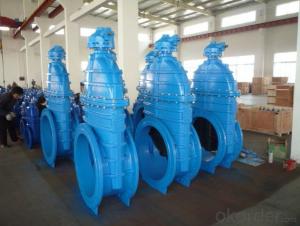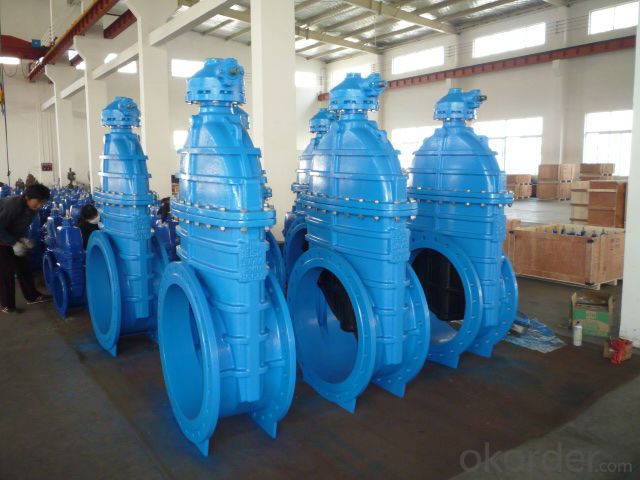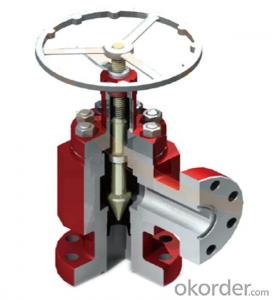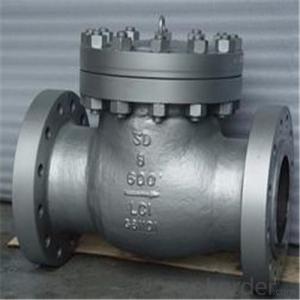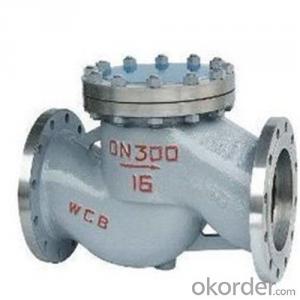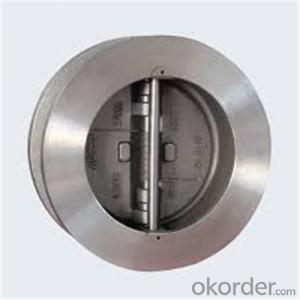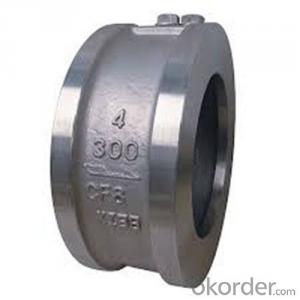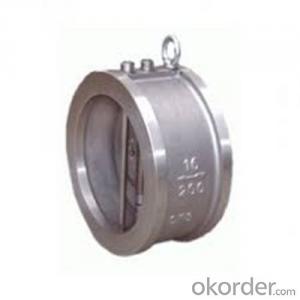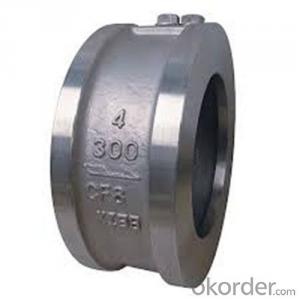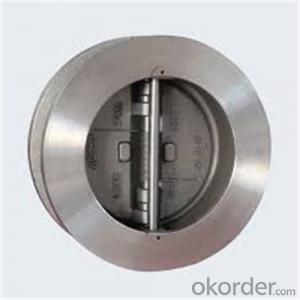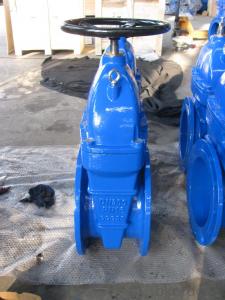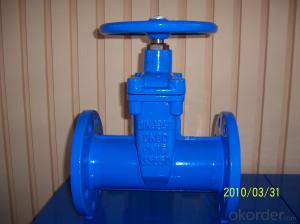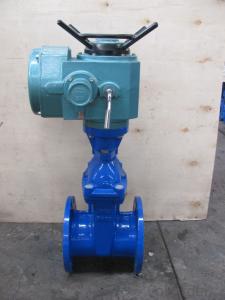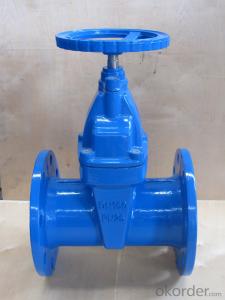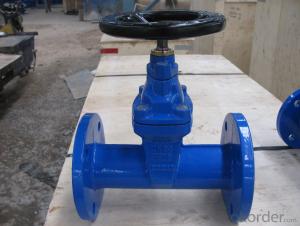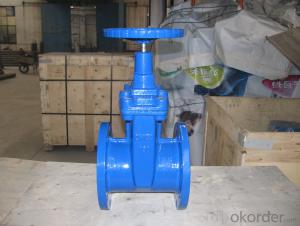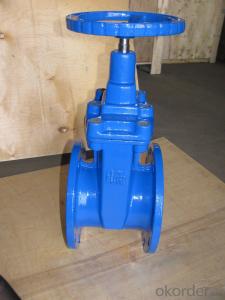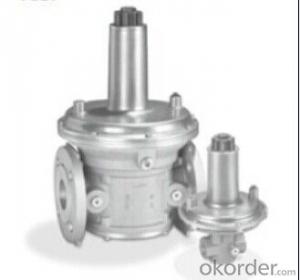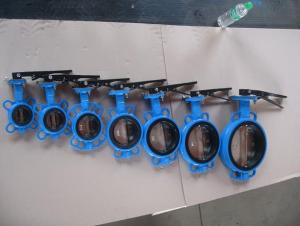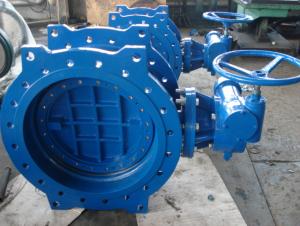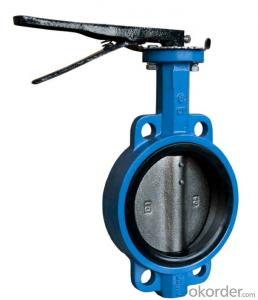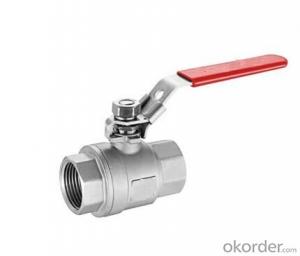Gate Valve DIN3352-F4 Resilient Seated High Quality
- Loading Port:
- China main port
- Payment Terms:
- TT or LC
- Min Order Qty:
- 1000 set
- Supply Capability:
- 50000 set/month
OKorder Service Pledge
OKorder Financial Service
You Might Also Like
1.Structure of Gate Valve Description:
1. Selected materials, in line with domestic and international standards, high overall quality of the material.
2. In line with the requirements of domestic and foreign advanced standards, reliable sealing, excellent performance, attractive appearance.
3. Sealing pair advanced and reasonable, gate and seat sealing surface with different hardness Stellite (Stellite) cobalt-based alloy cladding made, reliable sealing, high hardness, wear resistance, high temperature, corrosion good anti-abrasion performance, long life.
4. Stem quenched and nitride surface treatment, has good corrosion resistance, scratch resistance and abrasion resistance.
5. The use of flexible wedge gate structure, medium and large caliber set thrust bearings, friction force is small, and with a striking manually open and close with ease.
2. Main Features of the Gate Valve:
1)Full port design
2)OS&Y Outside screw and yoke .
3)BB. Bolted Bonnet .
4)Flexible wedge, Fully guided
5)Choice of solid or split wedge .
6)Renewable seat rings
7)Forged T-head stem
8)Rising stem and non-rising handwheel
3. Images of the Gate Valve:
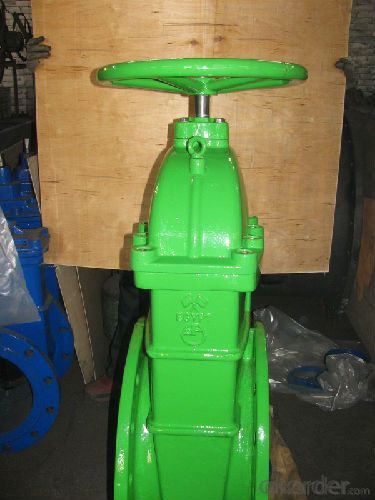
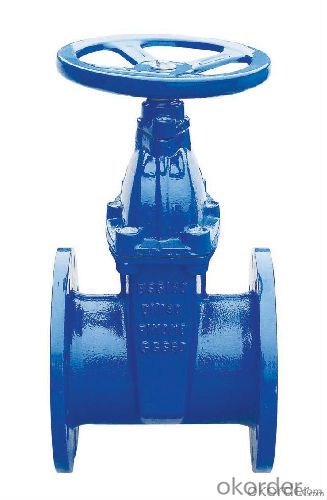
4. Specification of the Gate Valve:
1) Product information: the gate valves supplied are mainly used for adjusting water, steam, oil, gas, and natural gas in chemical industries
2) Standards: AWWA, DIN3352 F4/F5, BS5163, BS5150
3) Connection type: flanged type, push-on type, mechanical joint type, plain ends type
4) Size: 50-400mm/2" - 16"
5) Pressure grade: PN10, PN16
6) Coating:
a) Fusion-bonded epoxy 200-250 microns inside and out side
b) Coating as per customers' requirement
7) Package : carton for each item , wooden boxes outside .
5.FAQ
1. Can I get free samples?
A: Yes,we can provide you the free sample, but you need to bear their own delivery costs.
2. Can I request to change the form of packaging and transportation?
A:Yes, We can change the form of the packaging and transportation according to your request, but you have to bear their own costs incurred during this period and the spreads.
3. Can I request to advance the shipment?
A: It should be depends on whether there is sufficient inventory in our warehouse.
4. Can you produce the products according to my own drawings?
A:Yes,we can produce the products according to your drawings that will be most satisfy you.
- Q: Hi....my boyfriend is currently waiting to have heart valve replacement surgery and im a little worried about the whole thing...he doesnt like talking about it but if someone knows the answer to my questions I'd be so greatful!!First of all a little detail....he is 19, as far as i know he was born with this problem with his valve but it has got worse over time. he was also born with a hole in his heart but had an operation as a baby to fix this. he gets short of breath and often has pains in his chest. he says hes going to have a pigs heart valve to replace his, by open heart surgery (in a few months time). my main worry is whether the operations are always successful? and will this condition/operation affect his life expectancy??please if there are any experts in the field help put my mind to rest....!thanksshelly x
- Open heart surgery is always a risk, as is any major surgery. The main risks are from infection and blood clots. The risks taper off very quickly within a few days after the surgery. Heart valve replacements are a common operation, with a high success rate. Life expectancy is generally better with a valve replacement; but not all valve problems reduce life expectancy to begin with. Sometimes the trade-offs are more of an issue with quality of life, with higher quality achieved with a functioning heart valve, so some people may be taking a medical risk to obtain higher quality of life. No one can tell you for certain what the outcome of this operation will be. The odds are very high that everything will go perfectly and he will fell better than ever before. There is a very small chance that he will end up worse To put the risks in perspective, a person i know had minor surgery to her knee - a simple 1 hour operation done at an outpatient clinic. Ten days later, a clot broke loose and she died in her sleep. I have had the same operation twice and didn't even miss more than a few hours of work. Another person i know had severe heart problems and docs said it was terminal, but an operation could prolong his life maybe 5-7 years. He had the operation and its now been almost 20 years and his cardiologist says his heart is healthy and there's no reason why he might not live another 20 years or more.
- Q: Does a diverter valve even make a sound at all?
- I don't know what this Oscar Hoyas is talking about but a diverter valve sends the pressurized air back into the intake stream while a blowoff valve sends it into the atmosphere, a blowoff valve makes much more noise than a diverter valve, which is almost inaudible. Check into the function of a diverter valve as opposed to a blowoff valve if you are on the fence between the two.
- Q: i believe it's to do something to the valve guide to make it the right clearance n not go straight to the valve seat right? or is valve seat next?
- Once the valve guide is installed, it has to be reamed to fit the valve stem. After it has been reamed to fit the valve stem, the new valve needs to be seated in. (The valve seat should have already been done by this point) This can be done with a machine tool, or it can be ground in by hand with valve grinding compound. Once this is accomplished, the valve is removed, everything is cleaned thoroughly, and the valve is reinstalled with the spring and keeper. Normally you would do all the operations to all the valves at the same time. (That is, you don't grind in one valve, then go back and ream another valve stem. You do all the operations required at one time. So you would install all the valve guides, then ream them all, then grind or face the valve seats, then check the valve contact area, then remove all the valves, clean the head and valves up, and then reasemble into a completed head unit.)
- Q: I was diagnosed with Mitral Valve prolapse...I'm 21, 5.5 tall and 130lbs, I had a healthy lifestyle...my doctor said that my case isn't really sever..but i'm taking medications to keep it this way...something i cannot ask my doctor about, would intercourse be harmful to me? and how should I deal with it??? is it okay for me to have children in the future? and could my MVP be cured without surgery??
- good blood does not mix with bad blood. The values have nothing to do with that as the two sides of the heart are separate. With Mitral valve incompetence or prolapse, the valve does not close like it is suppose to. That allows back flow of blood. If bad enough, the treatment is a valve replacement. With Mitral valve stenosis, the valve does not open like it is suppose to. That prevents flow through the valve. The treatment is a valve replacement or sometimes a simple cut in the valve to relieve the stenosis can be done. Either way, if bad enough, surgery is needed, not pills.
- Q: Hi. im wondering what reed valves do and can they put on a 4-stroke engine or not???Thanks for your help.Dune.buggy5
- Reed valves were popular when you could get a street two-stroke bike. They allowed air to flow only one-way. I think Yamaha even had a nifty rotary valve thing that squeezed the air that the piston sucked so it would flow a bit faster into the combustion chamber. With a four-stroke, I don't think there's any advantage to complicating the air flow with a reed. That's what cams and valves do. You need to burn more fuel to get more power. There are several ways to do this. You can do this with more RPMs, more fuel/air mixture, or a larger displacement. But that's about power, not necessarily a reed valve.
- Q: The valves on our 2005 Pontiac Sunfire are bent and need fixing. Any idea of how much it might cost to have them fixed at a shop? Any estimates?
- ask different shops for a quote, once you're done start calling junk yards and ask for the price of that engine and how much warranty. you'd be surprised, you can get anything from 1 month to 1 year warranty on a used engine from a junk yard. in any case get the best price + best warranty. if you buy the engine alone from the JY get ready to pay about 350 to 500 just for removing the old engine AND installing the new bought engine. if you wait until winter these numbers might vary. gl
- Q: im 16 and im rly scared i have already been checked out by the hospital and they sed that i have a moderately leaky heart valve. They recommended me to see a childrens cardiologist since they dont specialize in children. i have to get another echo and some other tests done i think. im so nervous. whats going to happen to me??
- You'll probably have more tests done to see if you really have a leaky heart valve. It depends on which valve it is and what the cause is. The most common cause is to have a bicuspid aortic valve (two valve leaflets instead of 3). That can cause long term problems, so that is corrected by surgery to replace your aortic valve. Once that happens, you'll be fine. I'm not sure what you have, though, so there's no way to know for sure what your problem is. In general all leaky valves need to be replaced surgically if they're leaky enough b/c they eventually cause the heart to stop pumping well and lead to heart failure. The most common thing is what I mentioned, though. There's always a chance that your test was incorrect. Good luck to you.
- Q: Hi, I'd like to control a three way solenoid valve like this one:understanding is that an electric current through the solenoid will cause the valve to let air one way while no electric current will have the air flow the other. Is there a piece of equipment like a control box (that can communicate w/ a computer) that would allow me to control the solenoid valve like this? and if so, where would i be able to find something like this....i've googled but no success. I eventually want to control the valve from a computer. Thanks
- www.okorder /
- Q: What is a valve adjustment? I wanted to do one on my 1994 Honda civic ex cuz my friends told me I should do one but I wanted to know howmuch will it cost? And what will it do to my car in performance and gas consumption? My car right now has 155k miles.
- a valve adjustment is where the valves are put back into spec, they have a certain amount of space from the rocker to the valve stem, to accommodate for heat expansion every so often that clearance needs to be readjusted, otherwise the rockers can get too close and start to tap typically my friend charges $60 at his shop.
- Q: The water shut off valve that is under my sink in the bathroom is leaking and I need to replace it. I am wondering if I need soder the new one or can I just put some thread tape around it.
- More ofter than not the innards of a valve will deteriorate and start to leak, when that happens its best to replace the valve. Since you ask about soldering the shut off valve, I'm going to assume that you have a copper line coming out of the wall. Older valves required soldering, nowadays there is a compression fitting that eliminates the need for soldering. Once you have the correct size of the pipe turn off the main water supply. Remove the old valve (may need to take a hacksaw or tubing cutter, if its soldered on). Then slip the new nut and compression ring over the pipe. Next bring the valve up to the pipe and tighten the nut to the valve. Once the valve is secured on attach your lines, preferably new replaced lines. Open the valve line, and then turn on the main water line and check for leaks.
Send your message to us
Gate Valve DIN3352-F4 Resilient Seated High Quality
- Loading Port:
- China main port
- Payment Terms:
- TT or LC
- Min Order Qty:
- 1000 set
- Supply Capability:
- 50000 set/month
OKorder Service Pledge
OKorder Financial Service
Similar products
Hot products
Hot Searches
Related keywords
